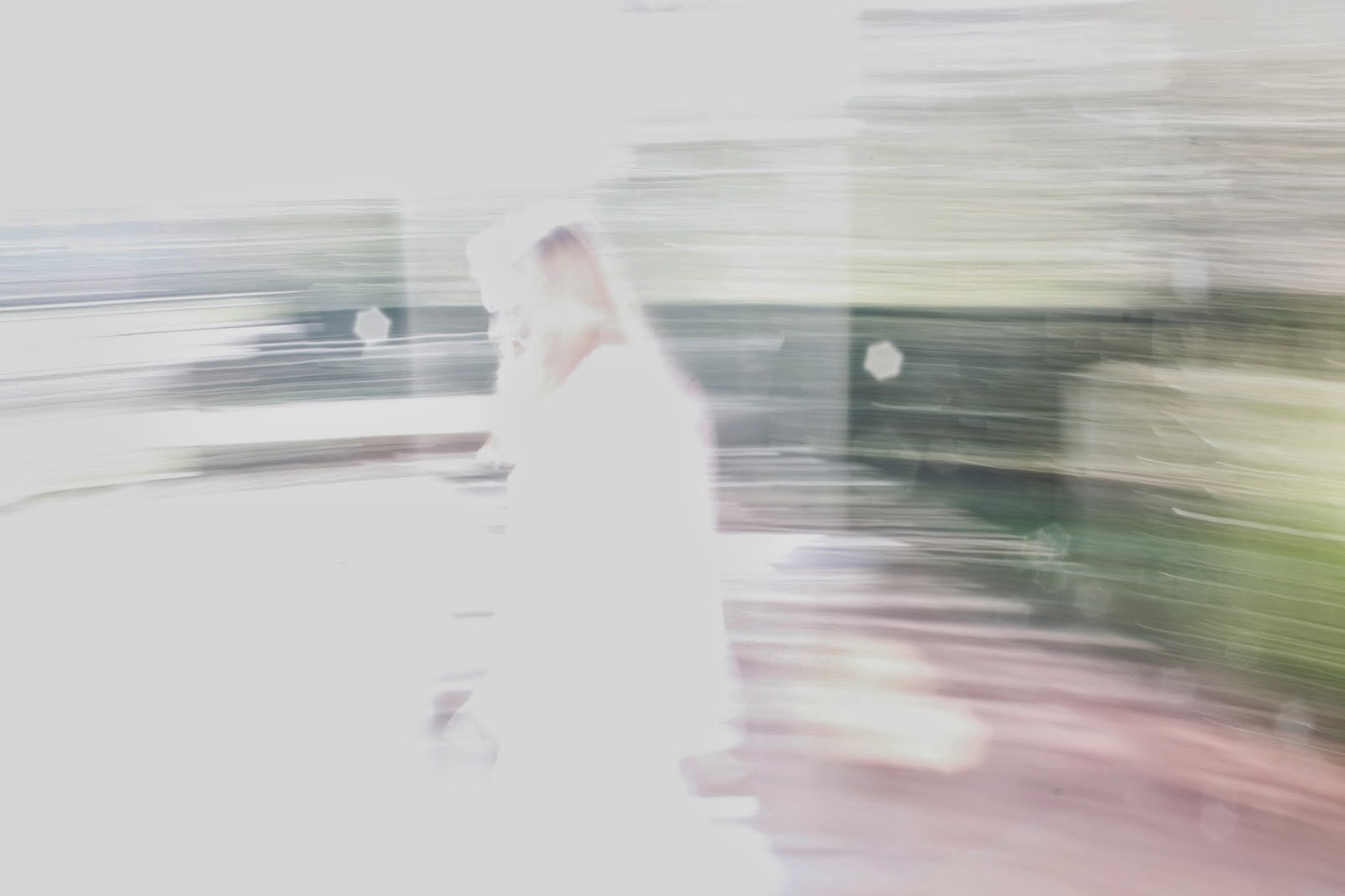Shutter was a useful, yet fun, technique to learn about. It was interesting seeing the way shutter could influence the outcome of a photograph. Being able to control the length of time the shutter stays open, I could control how much of the image was in focus. When we first began the tasks in class, the portraits weren't as informative as the moving shots. With someone standing still you could see that the person was less in focus as the shutter speed slowed. Having someone walk through the photograph when the shutter was still open changed the outcome of the photograph even more than when the person was standing still. On the faster shutter speeds the figure stayed in focus, but as I slowed the shutter speed, the background stayed in focus while the figure(s) became blurred.
The above photograph was taken at 1" and as you can see, the figures are completely out of focus while the background remains completely in focus.
Using shutter, I've found there is more control over an image. You can control what's in focus and what's not. Another photograph I took, I managed to get the whole scene out of focus, including the person that was walking through the frame.
The second image turned out really interesting. There was a lot of light in it, but everything in the frame was out of focus. The way the colours all blur together creates, something rather different, but an interesting photograph nonetheless. I managed to get the whole scene out of focus and not just the moving person by panning the camera with her movement. There was a lot of light in this image and that was probably because of the time of day, it was relatively early (before midday) and the light was in front of me, so behind the person in this image and this is why there is so much light.
Medium shutter- (still/landscape)
1/60
1/80
1/100
Slow shutter- (used to capture motion blur)
1/40
1/30
1/4
1" (1 sec upwards)
(TV) Shutter priority allowed me to set the shutter speed to any of the above and more to see what kinds of photographs different shutter speeds could produce. With some photographs you could produce a photo with motion blurring or bring the entire figure to a standstill in the middle of movement. Motion blurring was created using a slower shutter speed and capturing a figure in the middle of a movement was created using a faster shutter speed.
Tripods are great for using longer shutter speeds, it almost eliminates camera shake, there is the chance that when you hold the shutter that you will jostle the camera a bit, but it is less likely to come out as blurred as it would if you held the camera with a longer shutter speed. Faster shutter speeds, so above 1/60 th do not require a tripod because the shutter is fast enough that it almost eliminates camera shake all on it's own.
An ISO of 100 was used for both of the above photographs.


No comments:
Post a Comment